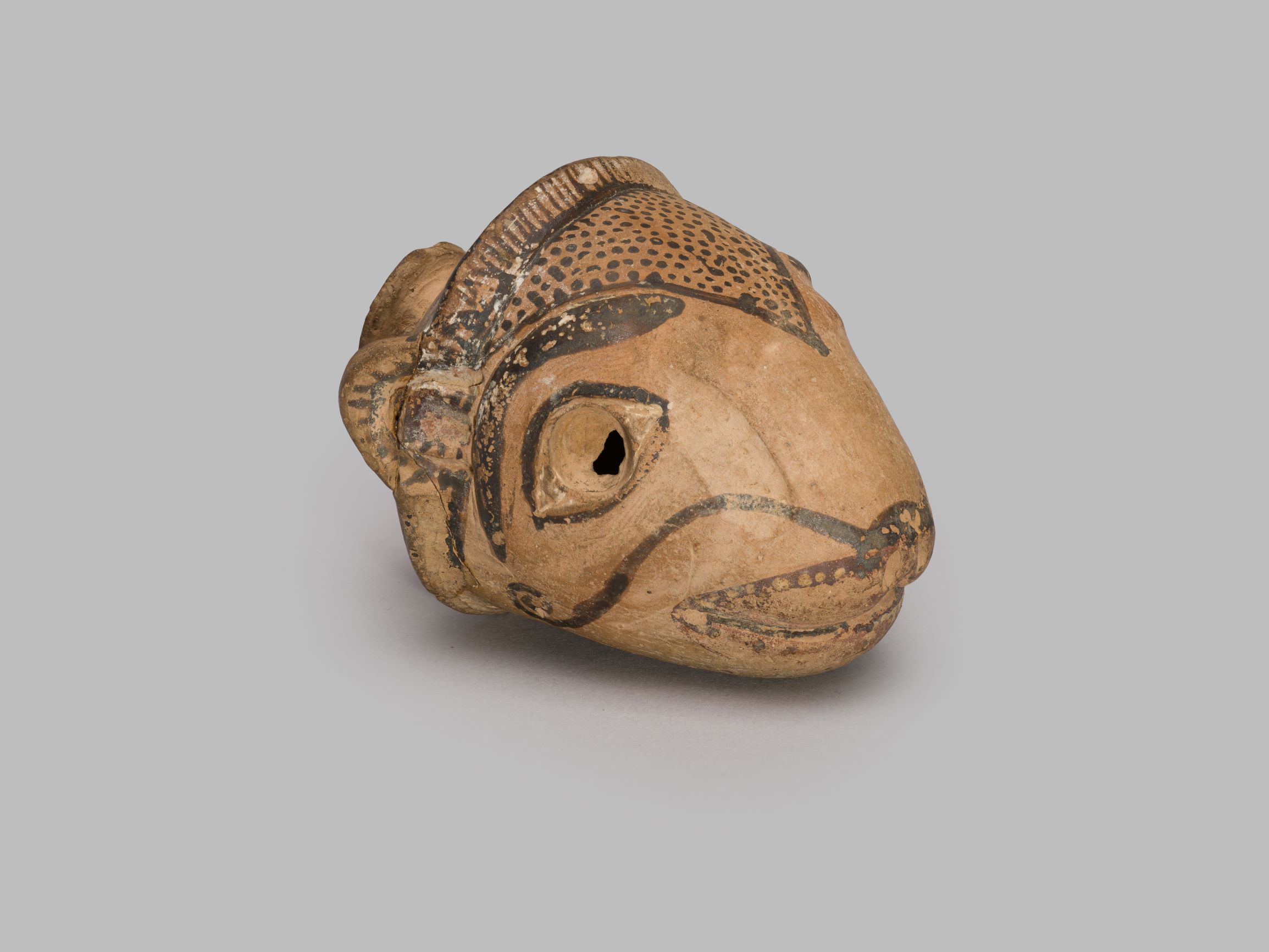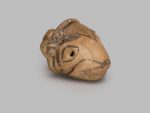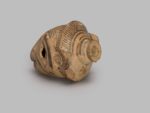
Ram’s Head Aryballos [Gr65]
Boeotian, 6th century BC
Painted terracotta (l. 7.6 cm, d. 5.7 cm)
This small container for perfumed oil is moulded in the form of ram’s head. Facial features are added with black paint. The eye sockets are now empty, but would once have contained some kind of inlay.
Small animal-shaped vases were produced in large quantities by Corinthian potters in the 7th and 6th centuries. They were widely exported and copied elsewhere. This example was made in Boeotia. Although it closely follows the Corinthian style, it is identifiable as a local product largely because of the buff-coloured clay, which is different to that found in Corinth, and because it was acquired in Boeotia.
The striking form of this vase was presumably intended to make its contents more attractive to a potential purchaser. It also served to disguise the fact that only a small part of the vase actually contained the expensive perfume.
Literature: J. Falconer and T. Mannack, Corpus Vasorum Antiquorum: Great Britain, Fascicule 19: Winchester College (Oxford, 2002), p. 19, plate 14.13-14; J. Chittenden and C. Seltman, Greek Art, a Commemorative Catalogue of an Exhibition held in 1946 at the Royal Academy, (London, 1947), p. 5 (no. 52); Winchester College Memorial Buildings: Department of Classical Art (Winchester, 1909), p. 14 (no. 12)
Exhibited: Royal Academy of Arts, Burlington House, London, 15 February – 17 March, 1946, no. 52
Provenance: From Boeotia, at Winchester College by 1909
Location: Treasury, Gallery 3

